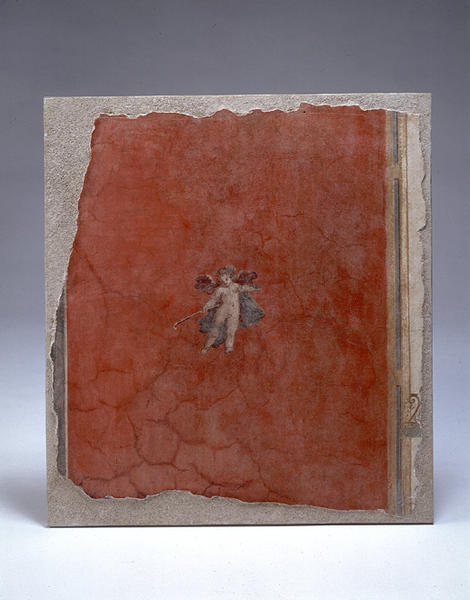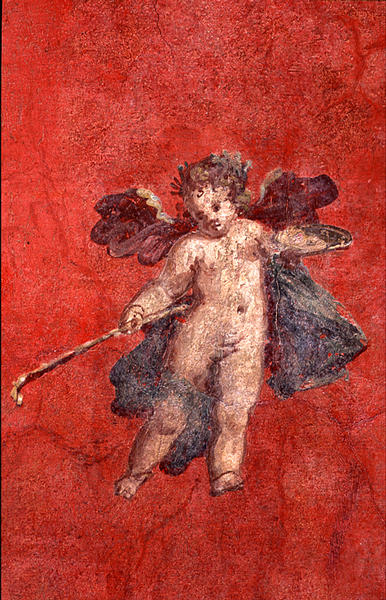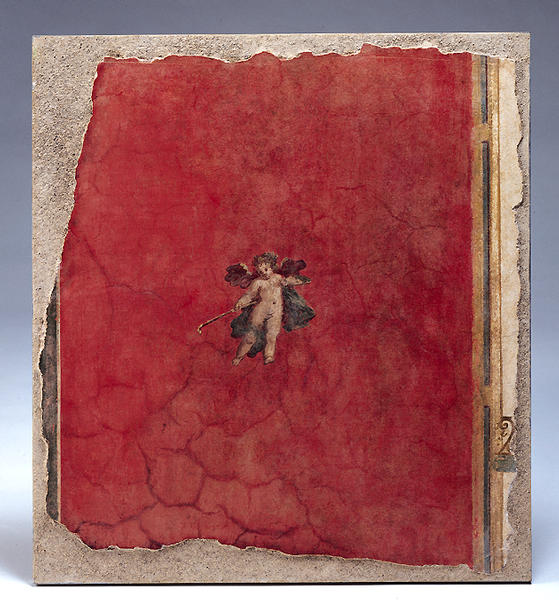Fresco Fragment with Cupid
- Roman
- 1st century
- Fresco
- H-59 W-55
Catalogue Entry
The subject of this now fragmentary painting is the naked, winged toddler known to the Romans as Cupid and Amor, who personified the sentiments and passion of love, a role he inherited from his Greek counterpart, Eros.1 Over time, however, the god of love had been transformed from a mature youth into a chubby, mischievous toddler. Here Cupid appears to be waiting for the arrival of some unwitting souls he can snare into a tryst with the crook of the shepherd's staff he holds in his right hand.
Floating freely, Cupid is set off from the bright red background by purple-brown wings and a fluttering gray-green mantle that crosses his right thigh. A sense of spatial depth is suggested by Cupid's advanced right leg and lagging left, and his whole body is given volume by means of modeling with dark and light colors.
A clue about original context for this painting is provided by the elements that frame it on either side. On the left is a section of a broad band of gray-green that is separated from the red field by a narrow, light-colored band. The right edge is treated differently, with a wide stripe of yellow on which are painted long, narrow rectangles of green. To the right of the yellow band is an expanse of white, and toward the bottom is a brown tendril rising from a green rectangle.
The subject matter, color scheme and framing devices of this fragment suggest that it was once part of a painting in the Third Style, which is characterized by the use of broad expanses of different colors laid adjacent to one another, separated by spindly architectural elements or decorative ornaments. When figures appear, they tend, as here, to be small and of an ornamental nature, but rendered with great precision.2 Perhaps this fragment once bordered a figural scene with a white background,3 or one that was framed in white.4
KM
1. LIMC 3 (1986), pp. 952-1049, s.v. Eros/Amor, Cupido (by Nicole Blanc and Francois Gury).
2. Ling 1991, pp. 52-62.
3. Ibid., p. 59, fig. 58.
4. Ibid., pl. VA.


